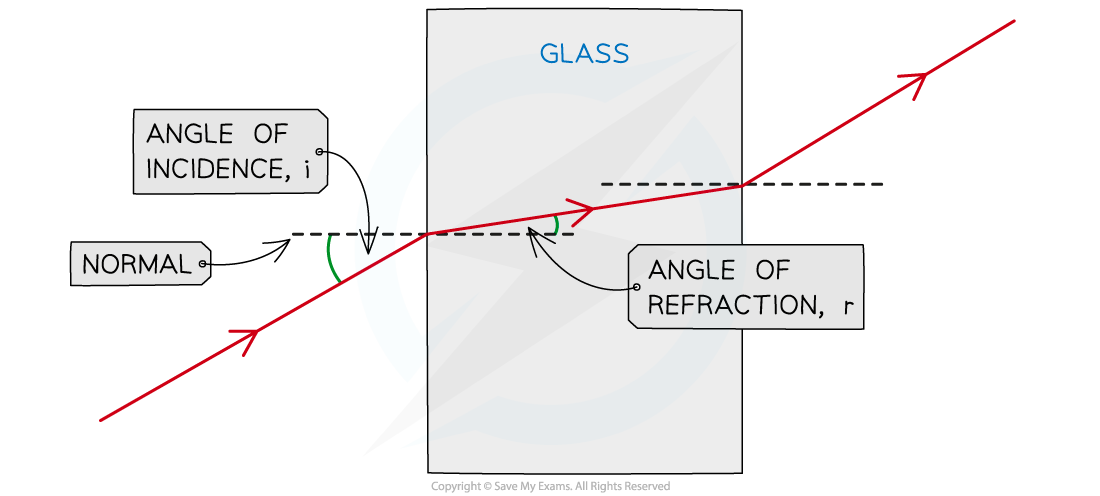Ray Diagrams (SQA National 5 Physics): Revision Note
Exam code: X857 75
Ray diagrams
Ray diagrams can be used to show refraction of light
Refraction is often demonstrated using a glass or perspex block

A normal line is drawn perpendicular to the surface of the medium
A normal line is drawn as a dashed line
The first boundary is the point at which the light passes from air into glass
The light ray approaching the first boundary is called the incident ray
The angle between the incident ray and the normal is called the angle of incidence
The light ray leaving the first boundary is called the refracted ray
The angle between the refracted ray and the normal is called the angle of refraction
The second boundary is the point at which the light passes from glass into air
The light ray approaching the second boundary is also called the incident ray
The angle between the incident ray and the normal is the angle of incidence
The light ray leaving the second boundary is called the refracted ray
The angle between the refracted ray and the normal is the angle of refraction

Refraction in blocks of different shapes
Refraction can be demonstrated with glass blocks of different shapes

Examiner Tips and Tricks
You may be asked about refraction with glass blocks of a different shape. Familiarise yourself with the paths that light will take according to the shape of the glass block.
A common mistake that students make is incorrectly indicating a change in direction when a ray leaves a medium at angle of 0° to the normal (such as leaving a semi-circular glass block back into the air).
Remember that the direction of the light ray changes only when the angle of incidence is greater than 0° to the normal.

Unlock more, it's free!
Did this page help you?